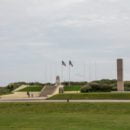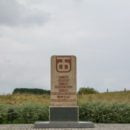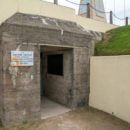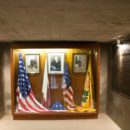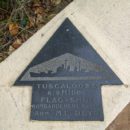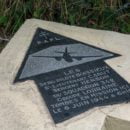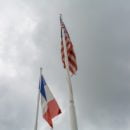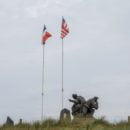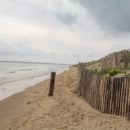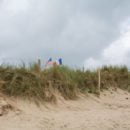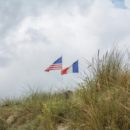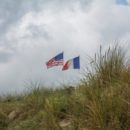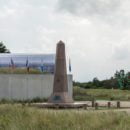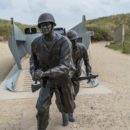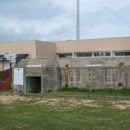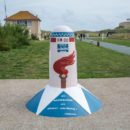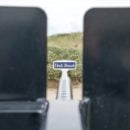On June 6, 1944, the mission began to take over the port of Cherbourg by attacking five points on the Normandy coast. Utah Beach was the most western point and one of the three that the United States played a role in. This was our first beach stop on the tour. The area still has the remnants of German bunkers and has several monuments to the allied forces that attacked this area. Including the engineering units that cleared the landing points of mines and iron crosses (designed to prevent a boat landing) and took on significant losses early in the mission.
This mission was lead on the ground by Brigadier General Theodore Roosevelt Jr. who was not only the highest-ranking and most decorated soldier at Utah Beach but also the oldest by a considerable margin.
Roosevelt was one of the first soldiers, along with Captain Leonard T. Schroeder Jr., off his landing craft as he led the U.S. 4th Infantry Division’s 8th Infantry Regiment and 70th Tank Battalion landing at Utah Beach. Roosevelt was soon informed that the landing craft had drifted more than a mile south of their objective, and the first wave of men was a mile off course. Walking with the aid of a cane and carrying a pistol, he personally made a reconnaissance of the area immediately to the rear of the beach to locate the causeways that were to be used for the advance inland. He returned to the point of landing and contacted the commanders of the two battalions, Lieutenant Colonels Conrad C. Simmons and Carlton O. MacNeely, and coordinated the attack on the enemy positions confronting them. Opting to fight from their present location rather than trying to move to their assigned positions, Roosevelt’s famous words were, “We’ll start the war from right here!”
Today the area is a peaceful quiet beach despite the many people visiting and learning quietly about the invasion. The main monument points to the direction of many of the key naval and air players and where they were in the channel.
The beach also serves as one of two starting points of Voie de la Liberté (Liberty Road) you can see the marker 00 below. The other is in Sainte-Mère-Église and is numbered marker 0.
Liberty Road is the commemorative way marking the route of the Allied forces from D-Day in June 1944. It starts in Sainte-Mère-Église, in the Manche département in Basse-Normandie, France, travels across Northern France to Metz and then northwards to end in Bastogne, on the border of Luxembourg and Belgium. At each of the 1,146 kilometres, there is a stone marker or ‘Borne’. The first lies outside the town hall in Sainte-Mère-Église.




